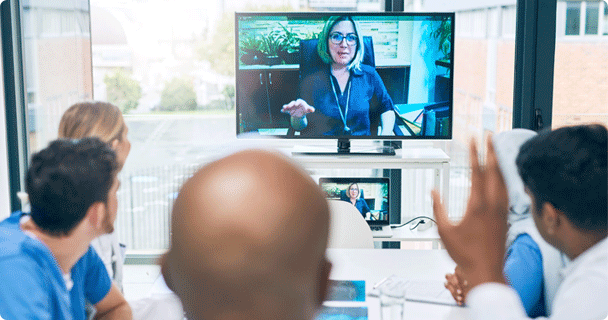blog


An encounter with the healthcare industry involves personal interactions with a provider. For success in treatment and for encouraging healthy behaviors, a trusting relationship needs to exist between the patient and a healthcare professional. This isn't always easy for members of minority groups whose previous interactions in healthcare may not have been positive. According to the LGBT Health Education Center, "When working with lesbian, gay, bisexual, transgender, and queer (LGBTQ) patients, it is especially important to build rapport as a way to counteract the exclusion, discrimination, and stigma that many have experienced previously in health care."
Without intending, healthcare providers may demonstrate bias during a healthcare encounter in what is said and in general behavior. An example from the same resource is that "a clinician or other staff person may say something or use body language that communicates a stereotype or antagonistic message about LGBTQ people. Sometimes called 'microaggressions,' these kinds of actions and statements often determine whether a patient follows medical advice or returns for care." Multiple negative healthcare experiences by someone identifying as LGBTQ have the potential to increase stress and can lead to detrimental behaviors as well as health outcomes.
The LGBT Health Education Center also offers that "no matter how we feel about prejudiced behavior, we are all susceptible to biases based on cultural stereotypes that are embedded in our belief systems from a young age. A 2015 study based on data from the Sexuality Implicit Assessment Test found that heterosexual physicians, nurses, and other health care providers implicitly favored heterosexual people over gay and lesbian people."
An important component of reducing impact of bias in this area is awareness. A BMC Medical Education article describes the use of "Programs designed to increase student or provider knowledge of the LGBTQ community and LGBTQ-relevant health care issues… [through] lectures, readings, videos, interviews or presentations by LGBTQ individuals, and group discussions." These programs should address a wide range of subjects, "including sexual orientation, gender identity, sexual history taking, LGBTQ terminology, disclosure of orientation and gender identity, discrimination and prejudice toward LGBTQ individuals, impact of LGBTQ-related discrimination on health, factors affecting medical access and care for LGBTQ patients, myths and stereotypes about LGBTQ individuals, transgender medical care, and legal concerns relevant to elderly LGBTQ individuals."
The same article suggests three important steps for reducing the impact of sexual orientation bias:
Ultimately, cultivating awareness is key to counteracting the negative impacts of unconscious sexual identity discrimination. The LGBT Health Education Center makes it clear that "An important way to reduce disparities, therefore, is for health care professionals to address their own biases on the individual and interpersonal levels. A first step is acknowledging that we are all vulnerable to biases. Once we are confronted with this awareness, our first impulse may to be deny or avoid it. It is normal to feel uncomfortable, but the only way to change our thoughts and behavior is to acknowledge our biases, become curious about them, and practice ways to transform them."
In order to provide quality care and positive outcomes for all patients, it is imperative to address and manage diversity and inclusion. There are many implications to this topic and its impact on morale, quality of care, cost of patient attrition, and healthcare disparity. Create a culture with no tolerance for bias by pausing, planning, and practicing positive interactions. A workforce that understands the importance of recognizing unconscious bias, diversity in the workplace, cultural competence, and health literacy not only improves peer-to-peer and caregiver-to-patient relationships, but also has the power to influence your organization's bottom line. Learn more about healthcare training for diversity & inclusion.
HealthStream’s learning management system and healthcare training solutions support medical training initiatives and allow for the best patient care.
View All Learning & PerformanceExpand the decision-making skills and effectiveness of your healthcare workforce with HealthStream's workforce development programs and services.
View All Clinical DevelopmentComprehensive, industry-leading provider onboarding and credentialing software that validates health outcomes and supports provider assessment.
View All CredentialingMake sure your healthcare staff can schedule out appointments and work schedules with ease using our line of nurse scheduling software solutions.
View All SchedulingWhen you enact HealthStream's quality compliance solutions, you can do so with the confidence your healthcare organization will meet all standards of care.
View All Quality & ComplianceUtilize patient access solutions and advanced reimbursement solutions to manage clinical denials and improve your organization’s reimbursement strategy.
View All ReimbursementLearn about our advanced resuscitation training solutions. Our solutions are designed to help improve patient outcomes.
View All Resuscitation